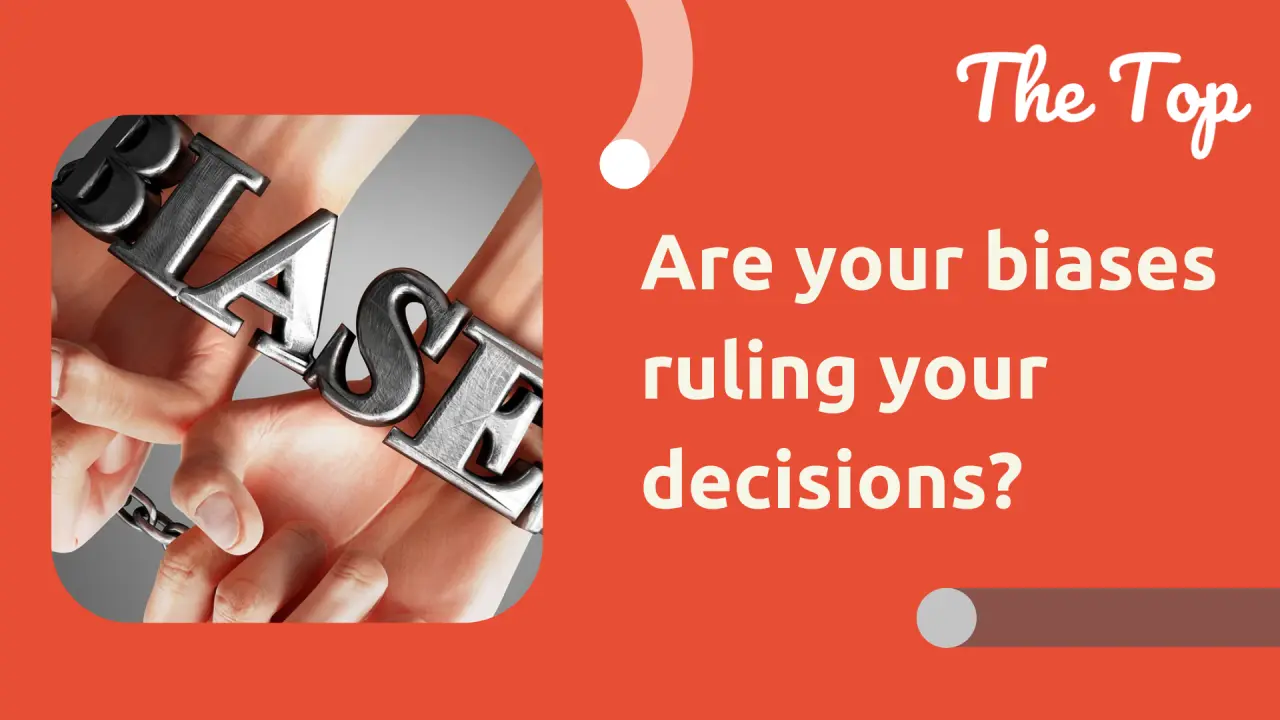Are your biases ruling your decisions?
We make a number of decisions every day. However, the role of unconscious bias is often ignored. Even though we would like to paint ourselves as rational creatures, intuition rules our minds in many places. The work of behavioral psychologist Daniel Kahneman has made significant breakthroughs in the area. The presence of heuristics and biases in the human mind is an objective reality. It is an important factor to consider for managers and leaders, who often make crucial decisions on their teams’ behalf.
In simple terms, biases reduce objectivity in our decisions. Instead of giving all reasons and factors their due share, we let some things affect our choices too much. Our decisions suffer from particular inclinations. This will directly hamper the quality of decisions. Consequently, there can be a wide-ranging impact on the team’s various activities. Any manager would realize how dangerous this can be. So, what is the solution?
The solution to this problem begins with an attempt to understand the problem. To eventually overcome the biases, it is necessary first to understand them and how they work. First, bias is not the term that can explain all of our heuristics and tendencies. There are several types of biases that managers need to be aware of. Moreover, these biases work differently. Only the overall impact – hurting the quality of decisions – is the same. Secondly, it can be hard to recognize and accept the existence of biases because we see them as natural processes.
Several biases regularly impact our activities. For instance, a manager may admonish an employee who has been underperforming lately, even though they have performed exceptionally well over a longer period. The effect here – a recent action eclipsing the whole – is called recency bias! It is due to this subtlety that biases are difficult to spot. To begin thinking more consciously, you can first read about the
Top 10 Most Common Manager Biases in the workplace.
Sometimes, biases can occur due to social conditioning over the years. The norms of male supremacy have held firm in corporate workplaces too. Effectively, we frequently find issues arising due to gender bias in the workplace. This is most evident in the gender pay gap and discriminatory policy designs. Like any other bias, gender bias can be tricky to identify when you are conditioned to think of it as natural.
Nonetheless, overcoming gender bias in the workplace is essential for maintaining a diverse and representative workforce. String biases hamper the manager’s work too. Therefore, managers need to resolve this issue. You can read the blog How Can You Overcome Gender Bias In The Workplace As A Manager to start creating a more inclusive workplace.
Apart from this, some biases are harder to understand. This may happen because their bases seem inexplicable. Take, for example, the halo and horn effect bias. In simple terms, this bias creates a mental picture of a person as an angel or the devil reincarnate! These couple of biases severely hinder managerial capabilities. In both cases, the individual gives a judgment based on a single impression or characteristic. In the case of the halo effect, we tend to favor those people who have managed to put a good impression on us once. On the flip side, a single lousy impression puts a person in a bad light owing to the horns effect. As a result of this bias, employees can become over-confident and complacent, and their performance can constantly fall when viewed under a Halo.
On the other hand, the Horn effect will lead managers to demonize certain employees even after repeatedly displaying outstanding performance in the team. Moreover, this can cause discrimination and consequent resentment in teams. All in all, there can be several harms due to bias. You can read more on
How To Avoid The Halo And Horn Effect Bias to save your workplace from the ills of biases.
Handling unconscious biases in your team can be a daunting process. Moreover, the problem is more prominent when we often fall into those biases. Nonetheless, competent managers must take measures to tackle these challenges; otherwise, they continuously threaten the team’s performance. All in all, to incorporate objectivity into decision-making and planning, it is imperative for managers to overcome biases that are hiding in plain sight. The process begins with increasing awareness and culminates with concrete actions.
Author: Ashish
Ashish is an entrepreneur with over 20 years of experience in strategy, coaching and product. In the present avatar, he is building Risely, an AI-enabled leadership development platform in between breaks from treks and baking.
View all posts by Ashish

